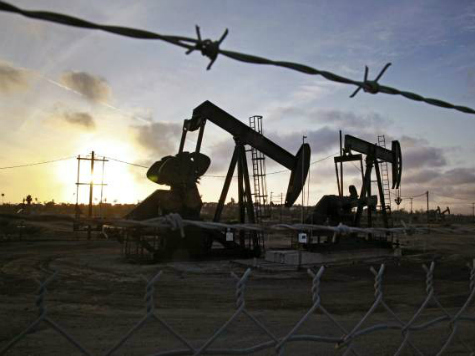The Obama Administration appears to be trying to balance its embrace of pro-carbon elimination of restriction against exporting U.S. domestically produced crude oil with an embrace of anti-carbon demands for radical increases in public investment and regulatory restrictions to combat global climate change.
President Barack Obama used the power of his Executive Office “pen” on June 25th to allow the U.S. Commerce Department to issue a ruling that all but terminates a four-decade Congressional restriction against exporting U.S. domestically produced crude oil.
The new rule re-interprets the laws’ “refined” oil exemption to include crude oil that has been stripped of natural gas liquids. Yet that process is already commonly used by ports in exporting countries to safely load crude oil onto ocean tankers. As Breitbart News reported on June 3, allowing crude oil exports will probably spur domestic crude oil production by up to another million barrels per day, but may also cause some rise in domestic gasoline prices.
Shortly thereafter, White House officials told Reuters News that Treasury Secretary Jack Lew would be meeting with billionaire environmental activist Tom Steyer, former Goldman Sachs CEO Hank Paulson, former Secretary of Housing and Urban Development Henry Cisneros, and Cargill CEO Greg Page. Their “Risky Business Project” report predicts “Large-scale losses of coastal property and infrastructure” as a result of consequences from “climate change.”
Risky Business is a partnership between billionaires Michael R. Bloomberg, as the CEO of Bloomberg News and Thomas P. Steyer, as founding partner of Farrallon Hedge Fund. The third partner, Hank Paulson, is a relative pauper who is only worth $700 million. Although the group claims to be non-partisan, all three are huge players in the securities business and financially benefited from the federal bailouts and the Federal Reserve’s quantitative easing.
The partnership appointed a “Risk Committee” to help “scope the research and review the research findings.” But neither Henry Cisneros, Gregory Page, Robert Rubin, Donna Shalala, George Shultz, Olympia Snowe, nor Dr. Al Sommer have advanced degrees in the physical sciences.
Risky Business predicts “Large-scale losses of coastal property and infrastructure.” Economic losses from existing properties sinking below sea level are estimated at “$238 billion to $507 billion.” These numbers are meant to sound sensational. But at a 3% annual discount rate for inflation over the next 85 years, the present value of $238 to $507 billion in year 2100only equates to $19.3 to $41.1 billion in losses today. These losses are only equal to about 1-2% of America’s $18 trillion GDP.
Michael Bloomberg has a personal interest in the fate of beachfront property as the new owner of the storied Ballyshear Estate in tony Southampton.Tom Steyer also has a personal interest in beachfront property after purchasing a “multimillion-dollar fixer-upper that looks out over a cliff to the glittering waters of San Francisco Bay.” Steyer jovially told a Men’s Journal reporter, “Do the words water amenity mean anything to you?”
The Risky Business Project claims that climate change’s “severe risks can still be avoided through early investments in resilience” and, and through immediate action to reduce the pollution that causes global warming.” Yet the report fails to name any of the scientific investigators or make their source data available for analysis.
President Obama made the oil industry ecstatic in the morning by approving domestic oil exports; and then made the climate change lobby ecstatic in the afternoon by accepting delivery of the Risky Business Project report in the White House. The President seemed to have got his carbon balance right–politically.

COMMENTS
Please let us know if you're having issues with commenting.